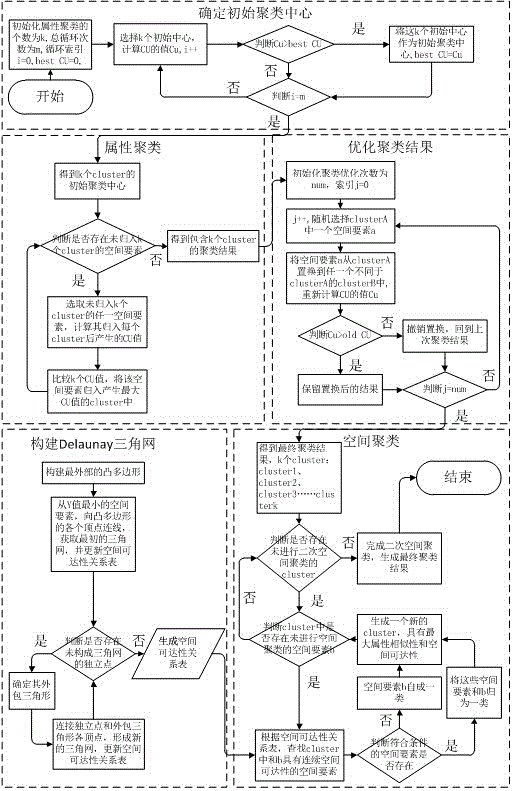A spatial clustering method based on gacuc and delaunay triangulation
A technology of spatial clustering and triangulation, applied in the field of spatial data mining research, can solve problems such as weak applicability, limited application scope, poor clustering effect, etc., achieving simple implementation methods, reducing constraints, and expanding applications. range effect
- Summary
- Abstract
- Description
- Claims
- Application Information
AI Technical Summary
Problems solved by technology
Method used
Image
Examples
Embodiment
[0088] The present invention uses a total of 28,093 hand, foot, and mouth disease data from Haishu District, Ningbo City, Zhejiang Province from 2005 to 2012 for verification, and clusters 28,093 spatial data with spatial locations and non-spatial attributes based on GACUC and Delaunay triangulation. Attribute selection age (0-2, 3-6, over 7 years old), rural / urban;
[0089] 1) Initialize the attribute clustering number k=6. Repeatedly select 6 initial centers, calculate the value of the classification utility function CU respectively, and determine the 6 initial centers of attribute clustering according to the principle of "the larger the value of the classification utility function CU, the better the clustering effect";
[0090] 2) Calculate the value of the classification utility function CU when each spatial element is classified into the initial center of each attribute cluster, compare the values of these classification utility functions CU, and cluster the spatial ele...
PUM
 Login to View More
Login to View More Abstract
Description
Claims
Application Information
 Login to View More
Login to View More - R&D
- Intellectual Property
- Life Sciences
- Materials
- Tech Scout
- Unparalleled Data Quality
- Higher Quality Content
- 60% Fewer Hallucinations
Browse by: Latest US Patents, China's latest patents, Technical Efficacy Thesaurus, Application Domain, Technology Topic, Popular Technical Reports.
© 2025 PatSnap. All rights reserved.Legal|Privacy policy|Modern Slavery Act Transparency Statement|Sitemap|About US| Contact US: help@patsnap.com



